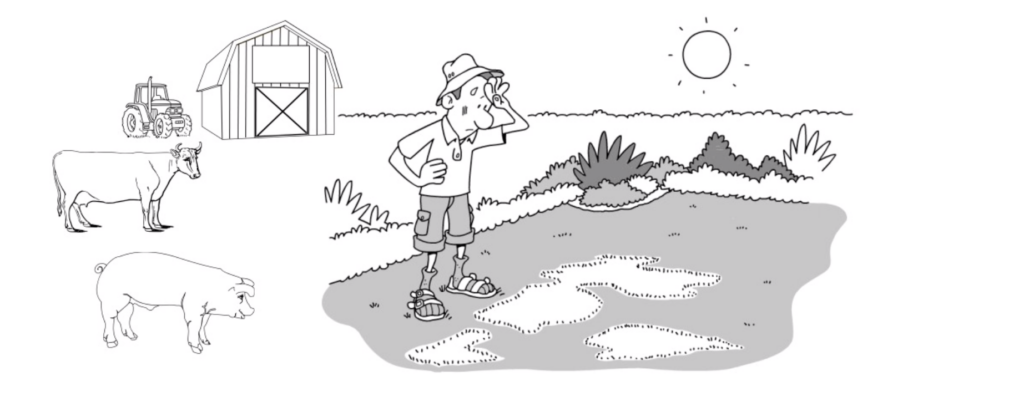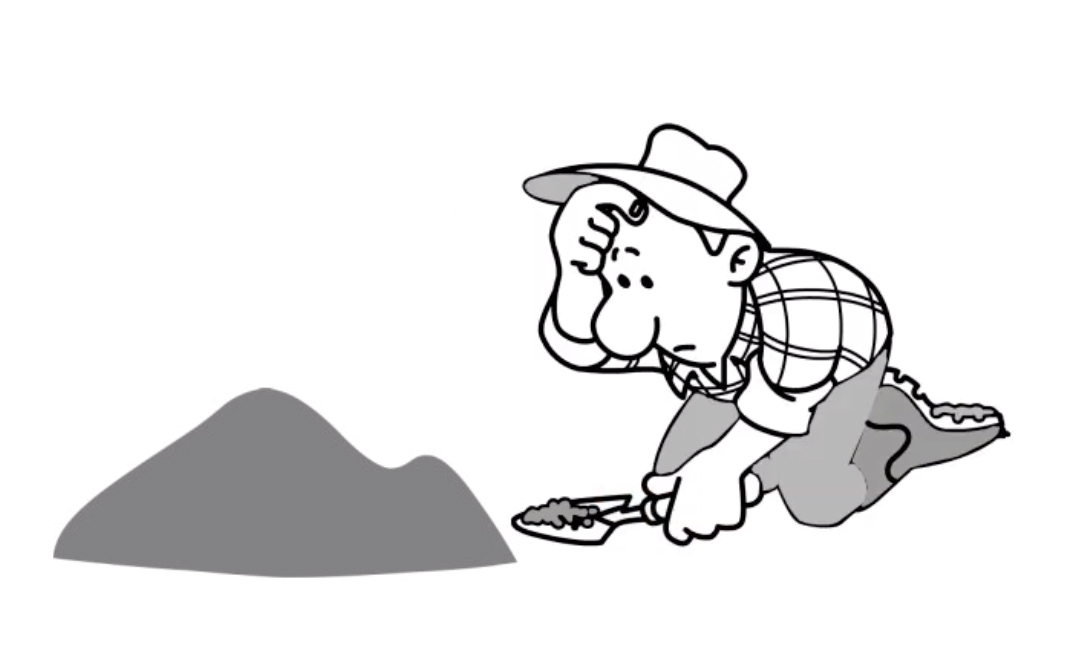ATD Tackles Adaptation to Climate Change for Dairies

- Climate Change is affecting aquifer replenishment and hotter dryer Summers increase demand that threatens water supply.
- Our chemical/mechanical system uses market proven equipment in a unique configuration to complete Steps 1 and 2 in a day regardless of the weather.
- Restrictions are already facts-of-life in most locations.
- No insurance is available for these threats to the family business.
- ATD can work with you to:· Reduce year-round barn water usage, increase clean water storage capacity, increase recovered nutrients, reduce labor and fuel, reduce greenhouse gas emissions, increase operational flexibility, add bio gas revenue off-site, and thus, increase sustainability.
We have the solution!
No magic mirrors! No sleight-of-hand! Just practical steps with proven technology.
Goal 1: Increase solids-free water storage capacity on the farm
How? Convert your lagoon to a RESERVOIR.
Goal 2: Create solids-free water reserve on site at current or reduced usage.
How? Recycle manure liquids and save the reduction in the RESERVOIR.
Goal 3: Reduce operating costs and GHG’s
How? Reduce weight and volume of nutrients by separating them from water.
Result:
100% capture of manure solids at 30% moisture stored in bunker. Spreader has increased access to fields with higher nutrition/tonne.
TDS and ammonia are concentrated into ~10% of original volume, optionally stored in tanks or RESERVOIR.
Forecast daily demand on water source is ~40% of current volume with remainder diverted to RESERVOIR.
RESERVOIR available for irrigation or barn re-use if water source is reduced or off-peak water is available.
The ‘Best Bang for a Buck’ when we adapt your present press to achieve Step 1 and that ‘Low Hanging Fruit’ gets you started.
ATD Tackles Adaptation to Climate Change for Dairies

We do that by:
- Climate Change is affecting aquifer replenishment and hotter dryer Summers bring new irrigation needs to threaten water supply and crops.
- No aquifer regulations yet, but licensing suggests changes are coming.
- No insurance is available for these threats to the family business.
- ATD can work with you to:· Reduce water usage, Reduce operating costs, Increase operational flexibility, Increase sustainability
We have the solution!
No magic mirrors! No sleight-of-hand! Just practical steps with proven technology.
Goal 1: Increase solids-free water storage capacity on the farm
How? Convert your lagoon to a RESERVOIR.
Goal 2: Create solids-free water reserve on site at current or reduced usage.
How? Recycle manure liquids and save the reduction in the RESERVOIR.
Goal 3: Reduce operating costs and GHG’s
How? Reduce weight and volume of nutrients by separating them from water.
Result: 100% capture of manure solids at 30% moisture stored in bunker. Spreader has increased access to fields with higher nutrition/tonne.
TDS and ammonia are concentrated into ~10% of original volume, optionally stored in tanks or RESERVOIR.
Forecast daily demand on water source is ~40% of current volume with remainder diverted to RESERVOIR.
RESERVOIR available for irrigation or barn re-use if water source is reduced or off-peak water is available.
MANURE TREATMENT THAT WORKS!
ATD’s 2 Step System™ will help to put the right nutrition
and moisture where and when it is needed.

ATD’s 2 Step System™ manages livestock manures in a cost effective, efficient and environmentally friendly manner. The system captures and concentrates virtually all nutrients (solid, liquid and gas) daily for storage or sale above ground to reduce hauling costs significantly and optionally reduce daily water demand. By separating nutrition from hydration you will have more nutrients per tonne in lighter loads and irrigation quality water year-round to match your crop needs.
Step 1 – Reduce water usage by recycling and reduce the cost of moving solids to the field by taking the solids out at the barn and sending only water and TDS to storage. If you are using settling ponds and wish to prioritize water management let’s just look at Step 2.
Step 2- Increases water recycling, capturing and concentrating Dissolved Solids, Ammonia for distribution.
ATD’s Step 1
We capture virtually all suspended solids daily with our Press and Clarifier and store them above ground. Solids will be compact, lighter, and cheaper to apply. It runs unattended.
The solids-free effluent is recycled to collect manure again with the rest sent to the Lagoon where more may be added direct from your source. The Lagoon holds dissolved solids but will now create less GHG’s, won’t need agitation or an annual pump-out.
Benefits of Step 1 – the low hanging fruit!
- Solids weight and volume are reduced. Nutrients/tonne are increased five-fold.
- Daily solids separation reduces Phosphorus transfer to the liquid stream. Solids can be distributed more accurately to meet the Environmental Farm Plan.
- Soil compaction is reduced by lighter loads. Dryer solids can be applied with simple equipment to improve operational flexibility.
- Labour and fuel costs to distribute and apply solids are reduced.
- Barn air quality improved, Nitrogen saved, and struvite production is reduced.
- The Lagoon will hold a little more water with the solids removed and it can be enlarged to collect any newly available water.
- The Lagoon will no longer produce Carbon Dioxide or Methane, thereby eliminating a major source of farm emissions.
- Add Fresh Water equal to the recycled flush water direct to your Lagoon or reduce demand on your source.
- Reduce transportation costs of solids to and from hub digesters.
- Small footprint reduces installation costs.
- Readiness for Step 2 and the ability to operate with less water.
This is what happens to your solids at the Digester
The Farm Rotary Press discharges 30% Dry Matter to a trailer for delivery to the Digester to be eventually discharged as digestate to the Hub Rotary Press. The Hub Rotary Press discharges 30% solids to a trailer to be returned to the dairy for storage above ground and the Press effluent goes to the Hub Clarifier and TDS concentrator to be discharged as concentrate to a tanker trailer to be returned to you for storage. The Concentrator’s clean water will dilute the next load at the digester.
ATD’s Step 2
Should water restrictions or water costs increase, install Step 2.
- Recycle more water and optionally improve it to drinking water standard.
- Capture and increase TDS and Ammonia for storage.
- This introduces new technologies to the farm with training to staff members to ensure minimum supervision needs are met.
Benefits of Step 2
- TDS and Ammonia capture and concentration in a liquid improves placement and timing accuracy, reduces application costs and increases sales value.
- Phosphorus will be concentrated in the solids, Potassium and Nitrogen will be in the liquid
- Reduces demand on aquifer by up to 60%.
- Irrigation volume is increased if surface water can be captured off-season to supplement lagoon contents.
- Potential recovery of some investment by sale of recycled water to unlicensed neighbor.
- Cleaner barn air when flushed with recycled drinking water.
At What Cost?
- Every farm is a custom client. Our job is to bring the greatest benefits at the least cost with a team that won’t promise what they can’t deliver.
- Project Estimates will be based on the Confidential Farm Data you enter on our downloadable Farm Facts Questionnaire and farm visits to confirm layout and proposal details.
- We will integrate whatever is needed with whatever you already have.
To the Hub Digester Operator
- Participating dairies will supply and receive semi-dried solids (Minimum 30% Dry Matter) in large trailers
- The Hub will add the water obtained from recycling digestate to prepare new solids for digestion.
- The Hub will dewater the digested solids – Step 1 and
Capture the TDS and ammonia contained in the effluent as a concentrate, recycling the clean water to incoming solids to increase gas production – Step 2
- Return disinfected, semi-dried solids and TDS concentrate to the participating dairies
Premature arrivals at the Hub will be stored in their trailer until processing capacity is available.
- Food waste solids are indistinguishable in the digestate but do contribute to overall volume and may require separate disposal arrangements.
- The Hub may require additional water to replace the water contained in the TDS concentrate, and unrecovered water vapor.
- Larger and lighter solids loads and smaller liquid loads and will reduce transportation fuel and labor, allowing longer hauling distances and increased volume at the Hub.



